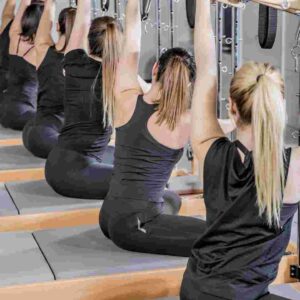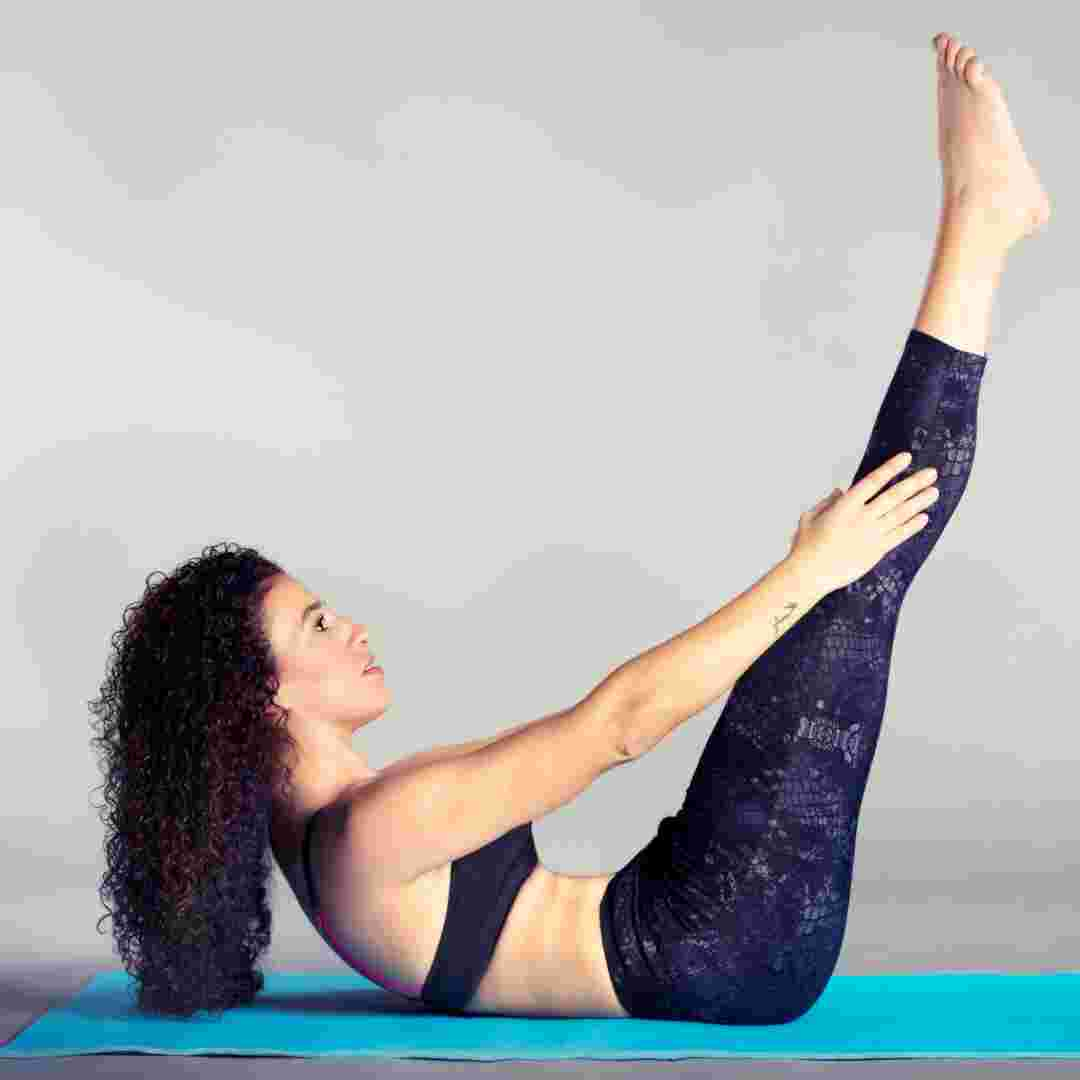Table of Contents
Introduction
Benefits of Pilates Jumpboard Class
How to Prepare for Pilates Jumpboard Class
Differences between Pilates Jumpboard and Traditional Pilates
Q&A
Conclusion
"Jumpboard class elevates your Pilates practise."
Introduction
A Pilates jumpboard class uses a jumpboard in Pilates movements. The Pilates reformer's jumpboard is a padded platform for low-impact leaping. This class improves coordination, cardiovascular endurance, and lower body strength. Fun and demanding, it adds diversity to your Pilates exercise.
Benefits of Pilates Jumpboard Class
Pilates has been around for almost a century. Joseph Pilates, who felt mental and physical health were linked, created it. Pilates strengthens core muscles, improves flexibility, and raises body awareness in a low-impact workout. Jumpboard Pilates is a recent variant.
Pilates jumpboard classes are high-intensity workouts that mix Pilates with a jumpboard. A Pilates reformer's end has a padded jumpboard. It lets participants leap while lying down. The jumpboard class adds diversity to your Pilates exercise and challenges your body.
A Pilates jumpboard class is a wonderful cardio workout. The jumping workouts raise your heart rate and burn calories. This makes it a great choice for weight loss and fitness. Coordination and balance are also improved in class. Jumping workouts involve core engagement and balance.
Low-impact Pilates jumpboard classes are another perk. Jumpboard class is gentler on joints than running or jumping rope. This makes it ideal for joint pain and injury sufferers. The class suits all fitness levels. The instructor can make exercises easier or harder based on fitness level.
The jumpboard lesson also improves posture. Jumping exercises demand core engagement and alignment. This improves posture and lowers back discomfort. The class strengthens leg muscles, improving balance and stability.
Pilates jumpboard classes relieve stress and enhance mental health in addition to physical advantages. The lesson emphasises breathing and movement, which can help you relax and reduce tension. The lesson is also a terrific place to socialise. This can boost your well-being and connection.
Wear comfortable clothes and bring a water bottle to maximise Pilates jumpboard class. The 45-60-minute programme includes a warm-up, jumping exercises, and a cool-down. The instructor will lead and modify workouts. Be mindful of your body and do what feels good.
In conclusion, a Pilates jumpboard class may spice up your routine and challenge your body. The class is low-impact and ideal for all fitness levels. It boosts cardiovascular, coordination, balance, posture, and mental wellness. Try a Pilates jumpboard class for a fun and difficult exercise.
How to Prepare for Pilates Jumpboard Class
Pilates is a popular exercise that strengthens core muscles, improves flexibility, and aligns the body. Pilates Jumpboard is one of the most thrilling and hard versions. This class combines Pilates with high-intensity cardio.
Before trying a Pilates Jumpboard class, you should know a few things. Fundamental Pilates ideas and practises must be understood first. This will help you exercise properly and avoid injury.
Take a couple introductory Pilates lessons to learn the basics before taking a Jumpboard class. This will strengthen your foundation and prepare you for Jumpboard class's tough workout.
Proper attire is another key part of Jumpboard class preparation. Wear comfortable, form-fitting clothes that allow complete range of motion. Avoid oversized clothes that may catch on the Jumpboard or other equipment.
Along with attire, bring a few essentials to class. A water bottle, towel, and grip socks are examples. Grip socks reduce the chance of slipping and injury on the Jumpboard and other equipment.
After preparing with information and equipment, attend your first Jumpboard class. The class starts with a stretching and Pilates warm-up. This is followed by Jumpboard movements on a Pilates reformer's padded platform.
The Jumpboard movements combine Pilates with high-intensity aerobics. Jumping, jogging, and other core-building workouts can improve body alignment.
Take breaks and listen to your body throughout class. Form and alignment are also crucial to avoiding injury. To ensure proper workout, the instructor will guide and correct you.
After class, cool down and stretch to avoid muscle pain and injury. This may involve mild stretching and foam rolling to relieve muscle tightness.
In conclusion, Pilates Jumpboard is a fun and demanding form of Pilates that incorporates high-intensity exercise. To prepare for a Jumpboard class, you should know Pilates basics, dress proper attire, and bring a water bottle and grip socks. Listen to your body, maintain good form and alignment, and take pauses during class. After class, cool down and stretch to avoid muscle pain and injury. With these recommendations, you may enjoy Pilates Jumpboard classes and improve your fitness.
Differences between Pilates Jumpboard and Traditional Pilates
The popular exercise Pilates has been around for almost a century. Joseph Pilates, who felt mental and physical health were linked, created it. Pilates strengthens core muscles, improves flexibility, and raises body awareness in a low-impact workout. Recent years have seen the rise of Pilates jumpboard classes. This article compares Pilates jumpboard with conventional Pilates classes.
Let's define Pilates jumpboard class first. A jumpboard is linked to a Pilates reformer. It is a flat board for lying-down jumping activities. Jumping on the board is part of Pilates jumpboard exercises. These exercises raise your heart rate, improve cardio, and challenge your muscles.
The intensity level distinguishes Pilates jumpboard classes from typical Pilates classes. Traditional Pilates classes are low-impact and joint-friendly. They emphasise exact alignment and controlled movements. In comparison, Pilates jumpboard classes are more intense. The jumping workouts raise your heart rate and stress your muscles. This makes it a good choice for more intense workouts.
The focus on distinct muscular groups distinguishes the two classes. Traditional Pilates sessions improve core muscles, increase flexibility, and raise body awareness. Pilates jumpboard classes focus on legs and glutes. These muscles are targeted by jumping workouts to increase strength and endurance.
A reformer with a jumpboard attachment is needed for Pilates jumpboard classes. This pricey equipment may not be available at all Pilates studios. Reformer and modest equipment like resistance bands and balls are needed for traditional Pilates courses. This equipment is more accessible and can be utilised in many Pilates classes.
Pilates jumpboard classes may have a distinct teaching style than typical Pilates classes. A jumpboard instructor will lead you through jumping routines and utilise lively music to push you. Traditional Pilates classes focus on precise exercises and may utilise soothing music to soothe you.
Unlike typical Pilates classes, Pilates jumpboard classes focus on the lower body and are high-intensity. It requires special equipment that not all Pilates studios have. However, for those seeking a more rigorous workout that targets lower body muscles, it may be ideal. Check with your local Pilates studio whether they offer jumpboard classes.

Q&A
1. What has a Pilates jumpboard class?
A Pilates jumpboard class uses a padded platform attached to a Pilates reformer. The jumpboard provides low-impact jumping activities that build cardiovascular endurance and lower body strength.
2. What are the Pilates jumpboard class benefits?
Pilates jumpboard classes promote cardiovascular fitness, lower body strength, balance, coordination, and a full-body workout that targets several muscle groups.
3. Who may take Pilates jumpboard?
Anyone who can jump low-impact can take a Pilates jumpboard class. To ensure perfect form and technique, novices should start with Pilates before jumpingboard classes. Always consult a doctor before starting a new workout programme.
Conclusion
A Pilates jumpboard class uses a padded platform attached to a Pilates reformer. The class uses Pilates exercises and board hopping for a low-impact cardio workout. A fun and demanding workout, this class helps enhance strength, flexibility, balance, and coordination. Overall, Pilates jumpboard classes can enhance any exercise routine.


